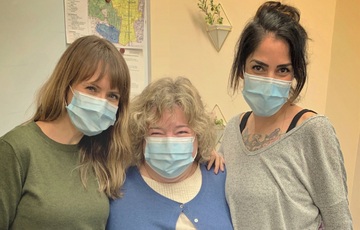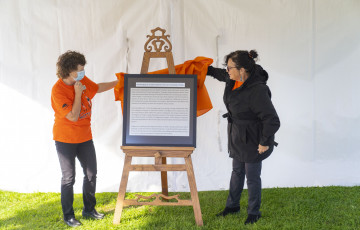The Risk Assessment Tool will promote consistency of practice, and provide additional depth to routine compliance inspection information.
The new Risk Assessment Tool will not be used on newly licensed or not yet operating facilities. A risk assessment will be conducted on a newly licensed facility during the first routine compliance inspection; generally occurring after 6 to 12 months of operation.
The risk assessment results will be shared with facility operators.
Over time the new Risk Assessment Tool will support the assignment of inspection resources based on risk of harm to persons in care, and should allow for a comparison of facilities across the province.
The Ministry of Health and local BC heath authorities will carry out an analysis of the new Risk Assessment Tool to determine whether it is meeting the intended outcomes.
A Risk Assessment will determine a Facility Risk Rating scored out of 40 and assign a value of low, medium or high to each facility.
- What is a Risk Assessment?
-
The Community Care and Assisted Living Act and Regulations establish the minimum health and safety standards for persons in care, any non-compliance with these minimum standards poses a degree of risk. A risk assessment adds depth and understanding to a facility’s compliance and how compliance directly relates to the health and safety of the persons in care. A risk assessment is a careful examination of any non-compliance to identify if it has the potential to cause someone harm and determining if what has already been done reduces the risk to an acceptable level, and if not, deciding what steps must be taken reduce the risk to an acceptable level.
- Why was a new Risk Assessment Tool created?
-
To keep current with new practices and methodologies in risk management and changes to the Community Care and Assisted Living Act and both Child Care Licensing and Residential Care Regulations the Ministry of Health renewed the “Risk Management Approach for Community Care Facilities Licensing Officers” to a version more reflective and formalized to the current state of regulatory practice.
- What Risk Assessment was previously used?
-
The “Risk Management Approach for Community Care Facilities Licensing Officers” developed in 1996 was used as the general practice guide to support licensing officers in their mandated duties and responsibilities.
- How was the new Risk Assessment Tool developed?
-
The new Risk Assessment Tool is grounded in legislation and was developed with extensive stakeholder input based on the Enterprise Risk Management approach adopted by the BC Government as well as an in-depth review of a range of other risk assessment instruments such as the Virginia Department of Social Services: Risk Assessment and Enforcement Options Guidance Manual.
- How is the new Risk Assessment Tool different than the previous Risk Management Approach?
-
The new Risk Assessment Tool like the Risk Management Approach before is one of the instruments Licensing Officers use in promoting the health and safety of persons in care. Through the assessment of risks of harm associated with non-compliance of the Community Care and Assisted Living Act licensing programs can identify the level of risk and better allocate time and resources to reduce the risk to health and safety of persons in care.
The new Risk Assessment Tool incorporates risk assessment with a routine compliance inspection and uses methodology embedded in the minimum health and safety standards of the Community Care and Assisted Living Act and Regulations. The risk assessment evaluates non-compliance of the minimum health and safety standards using the scope of harm that may result and the severity of harm that may be suffered to persons in care.
- How does the new Risk Assessment Tool work?
-
All adult, child and youth facilities licensed under the Community Care and Assisted Living Act receive inspections to review the facility’s compliance with the requirements of the Act and Regulations. A risk assessment will typically be completed during or following a routine compliance inspection to assess the potential risk of harm to persons in care.
The Risk Assessment Tool provides a structured method to estimate the potential risk of harm that may result from an undesirable situation and how bad that harm may be if the undesirable situation were to occur.
Determining the potential risk of harm takes into considerations the many variables such as the unique features and physical characteristics and policies and procedures of a facility, preventative measures that may be in place and the various care and supervision needs of the persons in care.
The risk assessment is based on two parts; a “current” review of compliance with the Community Care and Assisted Living Act and Regulations and a historical review of operation and compliance of the facility.
The risk assessment assigns a facility risk rating score out of 40.
- A score between 3 and 13 is a Low
- A score between 14 and 20 is a Medium
- A score between 21 and 40 is a High
- What does the facility risk rating mean?
-
The facility risk rating is a marker for areas identified as having the potential for risk of harm to persons in care or as being non-compliant with the Community Care and Assisted Living Act or Regulations, and those areas require additional precautions and/or actions to protect the health, safety and well-being of person in care.
A high risk rating means there are significant concerns that could have serious consequences to the persons in care and enhanced monitoring is needed to ensure precautions and/or actions are taken to protect the health, safety and well-being of person in care.
- Who decides the facility risk rating?
-
A Licensing Officer will use the information observed and reviewed during the routine compliance inspection and risk assessment to determine the facility risk rating.
- Who will receive a facility risk rating?
-
All adult, child and youth facilities which are licensed under the Community Care and Assisted Living Act will be subject to a risk assessment as part of the routine compliance inspection and will receive a facility risk rating.
- Will operators be given a copy of their risk assessment and facility risk rating?
-
Yes, the results will be shared with facility operators routinely.
- How often will the facility risk rating be updated?
-
Licensing officers determine the frequency of risk assessments. The routine compliance inspection and the risk assessment outline an approximate time between compliance inspections. In general a risk assessment will be completed at least once every 12-18 months following a routine compliance inspection; however there may be situations where a new risk assessment is required sooner. Licensing officers may also visit a facility at anytime for the purpose of a complaint investigation or follow up to an incident report.
- What is a routine compliance inspection?
-
A routine compliance inspection is an on-site review of the facility to assess that the provider is complying with the Community Care and Assisted Living Act and Regulations. During the inspection the licensing officer will look the areas of:
- Care and/or supervision
- Hygiene and communicable disease control
- Licensing
- Medication
- Nutrition and food services
- Physical facility, equipment and furnishings
- Policies and procedures
- Program
- Records and reporting
- Staffing
Routine compliance inspections are typically carried out with little or no notice to ensure the setting can be viewed as it normally operates. An inspection may take as little as two hours or be carried out over a few days depending on the type of facility, the number of persons in care and the care and supervision needs.
Following the routine compliance inspection the provider receives an inspection report, and information from this report is published on our website. When a provider does not meet the requirements of the Act or Regulations, an inspection report will identify the areas in non-compliance and request the provider make corrections.
Other types of inspections that may occur include routine compliance follow-up inspection to ensure that the provider has completed all of the corrections, incident inspection in response to a reported reportable incident and complaint inspection in response to a complaint.
- What is the frequency of routine compliance inspections?
-
In general a facility within Island Health with a low risk rating may receive a routine compliance inspection within 12 months and a facility with a high risk rating may receive a routine compliance inspection within three months. This will vary between health authorities depending on local licensing program resources available, geographical factors related to travel and demands of other workload such as investigating complaints.
- What if I disagree with the facility risk rating given?
-
A facility risk rating is based on the observed occurrence of non-compliance with the Community Care and Assisted Living Act and Regulations.
Following the routine compliance inspection and risk assessment the Licensing Officer will discuss with you what they have observed, what you are required to correct, timelines for corrections and the risk rating they intend to assign.
If you disagree with the facility risk rating you should contact the Licensing Officer who assigned the score for more information as to why that score was given.
- Will the facility risk rating be public?
-
Risk management has been practiced for many years and expanded quite considerably over the last decade. To keep current with new practices and methodologies in risk management and regulatory changes the Ministry of Health has introduced a new Risk Assessment Tool.
The new Risk Assessment Tool brings new classifications, processes and methodology, as with any change time is needed for training, implementation and change management. Time is also needed for facility providers to receive information about the new Risk Assessment and to be able to ask questions and understand the new process.
Please note the facility risk rating may be subject to release under the Freedom of Information and Protection of Privacy Act. If you have any questions regarding information releasable under the Freedom of Information and Protection of Privacy Act contact Island Health's Information and Privacy office via phone at 250-519-1870.
- Where do I get more information or a copy of the Risk Assessment Tool?
-
For more information about the Risk Assessment Tool contact your local Community Care Facilities Licensing office:
South Island: 250-519-3401
Central Island: 250-739-5800
North Island:
- Campbell River: 250-850-2110
- Courtenay: 250-331-8620




